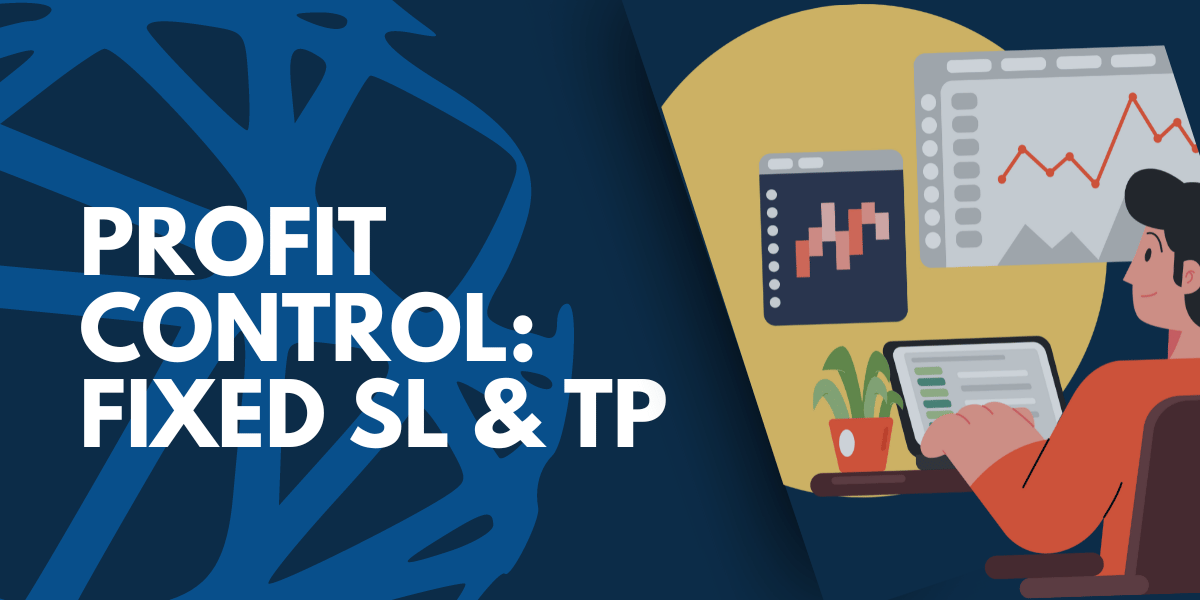Trade Copying Profit Control: Fixed SL and TP
Maximizing profit and managing risk

Maximizing profit and managing risk in trading are two of the most important fundamentals of being a successful trader. Whether you define your own strategy or are copying from a Master account that is run by someone, having a stop loss and take profit can help protect your account from losses and secure profit when the market goes in your favor. However, the common reason why some traders choose not to copy the Master’s SL and TP is due to the price difference between their broker accounts or the Master account strategy sets the SL and TP too close to the price not giving enough breathing room for volatility. One of the ways to manage this is through Fixed SL and TP features.
What is Fixed SL?
Fixed Stop Loss (SL) lets you set a specific number of pips as the stop loss for all Slave account trades, ignoring the Master’s SL. This helps you manage your risk. However, when used with Max Risk, the Trade Copier adds an extra safeguard. If your Fixed SL results in a higher potential loss than your Max Risk setting, the system automatically limits the loss to the Max Risk. In essence, the Trade Copier always follows the more conservative option to ensure you’re never risking more than you’ve defined.
What is Fixed TP?
Fixed Take Profit (TP) allows you to set a predefined number of pips at which your trade will automatically close to secure profits. Just like with Fixed SL, any Take Profit set by the Master account will be ignored. This tool ensures that you can lock in profits at a level you’re comfortable with, even if the Master has a different target.
Let’s Take a Closer Look at How to Use Fixed SL and TP when Using Different Currency Trading Brokers
You’re a trader who is copying trades from a Master account managed by someone else or an EA. The Master account is taking high-risk positions in volatile currency pairs like GBP/JPY. Each order has its own SL and TP, however, they are very loose Stop Losses and Take Profits.
By setting a Fixed SL of 50 pips, you can ensure that no matter what the Master sets, your trades will close if they lose more than 50 pips shielding your account from higher losses. The same goes with Take Profit. If the Master orders are making consistent losses due to not taking profit before the market shifts to the opposite direction, you can set a fixed TP to secure the profit.
Of course, this is not a perfect case scenario as each of your trades will have its own story. You need to consider your overall strategy and compare your account performance to properly gauge whether Fixed SL or Fixed TP is the right approach for you.
In a Nutshell:
1.) If Master’s SL/TP is too loose, copy traders can set fixed pips toward SL and TP. This allows them to customize the orders according to their preference instead of purely relying on the Master account’s decisions.
2.) If the strategy follows clear concepts of price action where copy traders know when to exit, whether for loss or profit, the Fixed SL and TP features help them stay consistent with their approach.
3.) Fixed SL in tandem with the Max Risk feature leads to more conservative risk protection.
4.) If Master is aiming towards riskier profit but consistently not securing a profit, Fixed TP can be set to secure the profit before the market reverses.
At Duplikium, we’re committed to providing flexible and robust risk management options. Keep reading articles and tutorials, so you’ll learn more about how you can manage your copied orders with Duplikium. If you have any questions about how to implement these features best, our friendly customer support team is ready to help.
The information provided in this content is for educational and informational purposes only. It does not constitute financial advice or a recommendation for any specific trading strategy. Trading involves risk, and you should carefully consider your own financial situation and seek professional advice before making any trading decisions.